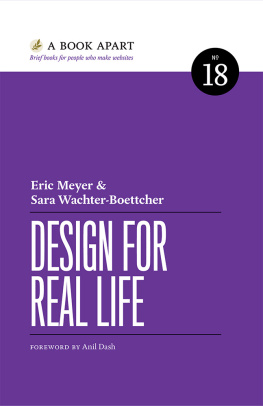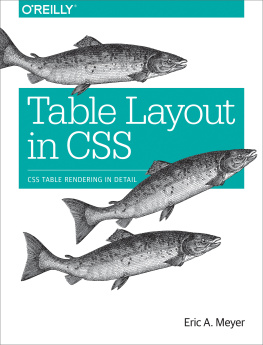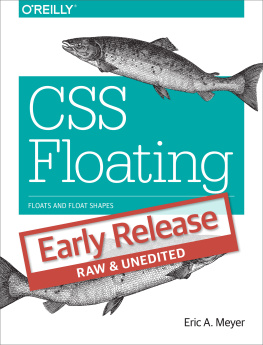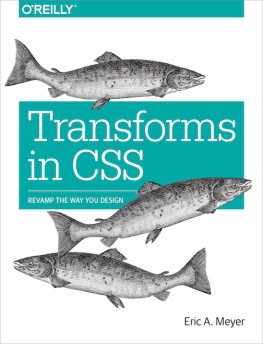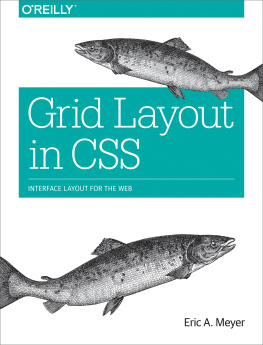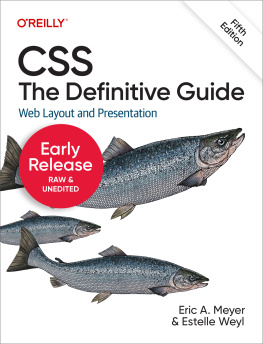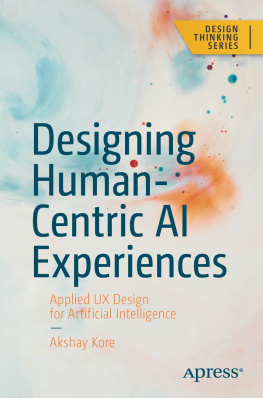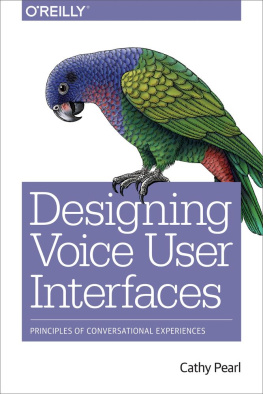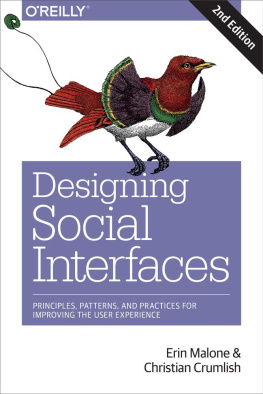IVE SPENT MY entire adult life surrounded by people who create digital experiencesfrom the era of desktop software to the birth and blossoming of modern websites all the way to todays social networks and mobile apps. Two billion people now have some kind of access to internet technologies, and almost all of them are spending more and more time with their thumbs flicking across their phones. And the technology theyre using has a real impact on their lives. They dont use an app to share photos; they use it to maintain a relationship with distant family. They dont need to do online banking; they need to lend a friend money to help them out of a jam. Nobody wants to learn a complicated set of privacy controls; they just want to be able to express themselves without antagonizing bosses or in-laws.
For all the advancements weve made, these more human problems are still hard to solve. Most of the bugs that people in tech talk about fixing are mundanea few pixels out of alignment, or a search form thats slow to produce results. Far fewer of our conversations start with, How is this new feature supposed to make someone feel? or, Are we thinking of how peoples personal lives can be complicated and change over time? or, What happens if our app is used by someone whos extremely vulnerable, either economically or politically?
These are the kinds of questions that Eric and Sara raise, and begin to answer, in Design for Real Life. They are worthy questions, and difficult ones, so we need guides to teach us how to think about issues that go far beyond the buttons on our screens. In a time when people creating technology have promised to transform and disrupt nearly every aspect of our lives, and when the people who succeed in tech have become some of the wealthiest and most powerful people who have ever lived, the need for a humane perspective couldnt be more urgent.
All of us who create technology have a wonderful, challenging obligation to ensure that our work makes lives better for everyone it touches. Design for Real Life gives you the tools to start making sure the technology you create is as kind and humane as your intentions.
To my mother, Rebekka, who taught me to be brave.
To the stars by which I steer: Kat, Carolyn, Rebecca, and Joshua.
INTRODUCTION
IT IS NICE TO BE NICE.
Youll find this phrase everywhere at ThinkUp, a service that sends its users daily updates about their interactions on social media. By all accounts, ThinkUp cares deeply about its members. It doesnt sell data. It doesnt run advertising. And it has worked hard to develop more meaningful features than simply tracking faves and follower counts.
One such feature is BFF, which sends users an email alert about the social profile theyve been interacting with most, accompanied by one of five or six programmed headlines: Peas in a pod, Best buds, Get a room!
That last one gave cofounder Anil Dash pause. I dunno he remembers saying to the writer. But the team did a quick straw poll, and everyone decided it would be fine.
Until the email came in:
You told me to get a room with somebody whod been stalking me.
Suddenly that little phrase didnt seem fine at all.
It wasnt just that one complaint. Get a room is the most-criticized copy ThinkUp has ever published, despite the fact that the BFF insight only goes out to a fraction of users, and only a fraction of that fraction were served the offending message. Most users just found it a little off-puttingicky, if you will. But that email about stalking? It got the teams attention.
Dash and his cofounder, Gina Trapani, pulled the snippet.
THINKUP IS FAR FROM ALONE. In apps and on websites and in our inboxes, we design countless messages optimized for the idealized user. We fill personas with smiling faces. We write use cases focused on simplicity and speed. We create flows that are ever more seamless, even in the face of lives that are full of rough edges.
Most of the time, we mean well: we talk about delight and satisfaction; we emphasize that our products are personal and relatable. But making digital products friendly isnt enough to make them feel human.
Real life is complicated. Its full of joy and excitement, sure, but also stress, anxiety, fear, shame, and crisis. We might experience harassment or abuse, lose a loved one, become chronically ill, get into an accident, have a financial emergency, or simply be vulnerable for not fitting into societys expectations.
None of these circumstances is ideal, but all of them are part of lifeand, odds are, your site or product has plenty of users in these moments, whether youve ever thought about them or not.
Our industry tends to call these edge casesthings that affect an insignificant number of users. But the term itself is telling, as information designer and programmer Evan Hensleigh puts it: Edge cases define the boundaries of who [and] what you care about ( http://bkaprt.com/dfrl/00-01/ ). They demarcate the border between the people youre willing to help and the ones youre comfortable marginalizing.
Thats why weve chosen to look at these not as edge cases, but as stress cases: the moments that put our design and content choices to the test of real life.
Its a test we havent passed yet. When faced with users in distress or crisis, too many of the experiences we build fall apart in ways large and small.
Sometimes, its a bit of microcopy thats meant to be cute and playfuluntil its placed next to something thats anything but, like this Medium post our friend Kevin Hoffman wrote mourning his friends death ( FIG 1 ).

